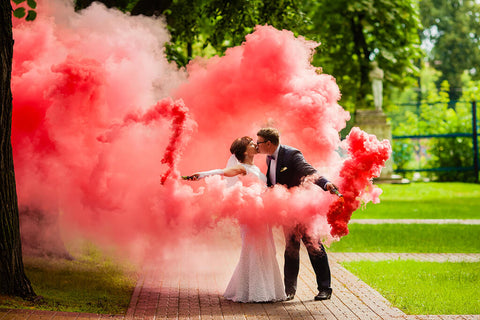- Lightroom Presets
- Mobile Presets
-
Photoshop
-
Learn
-
Support
-
Install
- Best Sellers
- Blog
By Ana Mireles on | No Comments

Chances are, you've encountered discussions or read articles about the art of storytelling in photography. It's a highly recommended approach for enhancing images that captivate your audience.
However, mastering this technique can be pretty challenging. Furthermore, for many new photographers, there's often confusion regarding what it entails and how to execute it effectively.
In this article, I will take a deep dive into the foundational principles of storytelling photography:
Storytelling in photography is simply the art of creating images that tell a narrative. Let me illustrate this concept with an example.
Imagine two scenarios: one where you photograph a product displayed against a plain white background and another in which you shoot the same product integrated into a dynamic lifestyle setting.
The former is a straightforward depiction of the subject, while the latter weaves a compelling narrative around it. This principle holds true whether you're working with portraits, landscapes, or any other photographic genre; storytelling can be applied across the board.
There are two primary methods of achieving storytelling through photography. One involves using a single image to encapsulate a story, while the other employs a sequence of photographs. The latter approach is akin to the literary method of storytelling, allowing the viewer to witness the narrative unfold from beginning to end.

Mastering storytelling in photography can be a formidable challenge and is often regarded as one of the most demanding aspects of the craft.
But don't be discouraged; it's a skill that can be practiced and refined. Here are some valuable tips that should be helpful in your journey:
To effectively convey a narrative through your photographs, it's crucial to have a well-defined understanding of the story beforehand. So, when planning your photo session, consider these five fundamental questions:

Let me illustrate the significance of the "Why" question in storytelling with an example:
Now, with all these elements, you have the foundation for a story. However, it's the "Why" question that breathes life into the narrative:
In my example, the girl is searching for a letter hidden by her father earlier in the day in the library. She can't switch on the lights as it would disturb her sleeping father, so she relies on a candle for illumination.
Alternatively, a different storyline might involve her sneaking into an abandoned house to find a book of spells that allows her to travel through time.
As demonstrated, you can narrate two distinct stories by altering the "Why" while keeping the other four questions consistent.
The "Why" question provides purpose to every element within your photo, making it unique and truly captivating in its storytelling.

While thinking about your story beforehand is beneficial, it’s equally important not to become paralyzed by overthinking it. You don’t have to hold out for perfection or worry about creating a masterpiece.
Pablo Picasso once said, "Inspiration exists, but it has to find you working.” As you can imagine, he had a rigorous work routine, including most afternoons and nights.
Keep in mind, that you don’t have to follow Picasso's routine to succeed, but it's crucial to acknowledge that improving skills comes through practice. If you postpone your efforts, waiting for inspiration to strike, you may find yourself waiting forever.
While some photography genres, like photojournalism or documentary photography, tend to be straightforward, others, like conceptual or fantasy photography, demand a more intricate approach to convey their messages effectively. This is precisely where symbols and visual metaphors can prove to be invaluable tools.
Studying art history can provide invaluable insights into how you can incorporate symbols into your images. Certain symbols have consistently held specific meanings across various artistic styles and historical periods. For example, skulls have often symbolized mortality, while candles have been symbolic of the passage of time, among many others.
Nonetheless, it's crucial to remember that symbols are rarely universally understood. They are typically rooted in specific cultures, religions, or time periods. Consequently, it's essential to consider your intended audience when planning your photographic composition.

When weaving a narrative through your photographs, the harmony of every element is essential. This cohesion allows the viewer to immerse themselves in the story. And any deviation can serve as a persistent distraction, pulling them out of the story.
Consider a scenario where your narrative unfolds on a stormy night. If the lighting in your photograph implies a sunny day outside, the narrative loses coherence, and the viewer may fixate on the inconsistency of the sunny weather.
This attention to detail extends beyond lighting; it encompasses props, wardrobe choices, and every facet within your photo's frame. Every element should effortlessly complement the story and feel like an integral part of the whole.
As I mentioned at the beginning of this article, storytelling in photography can be accomplished through a single image or by creating a series of images.
It's not a matter of one method being superior to the other; instead, each presents unique challenges. A series of images can adopt a narrative structure akin to a book or a movie, providing a comprehensive tale.
Conversely, single images lack the capacity for sequencing or offering multiple perspectives. Everything necessary for the viewer to grasp the story must exist in a single frame.
Therefore, before starting your project, it's essential to determine how many images you plan to use.
Consider this analogy: Envision your story as if it were a novel. Would you choose to create a graphic novel illustrating each chapter, or would you aim to encapsulate the entire story within the confines of the book cover?

Photography is not the only medium that employs storytelling. Gaining insights into how storytelling is executed in other art forms can be a valuable means to enhance your skills.
A great place to start involves examining films or theatrical plays, as their highly visual nature makes it easier to draw connections. However, you can also delve into non-visual arts like literature or music, as they offer valuable perspectives on storytelling.
In today's Internet-driven world, we enjoy unprecedented access to information. Not only can you admire the work of your favorite photographers, but you can also glean valuable insights from them.
Whether you read their blog, listen to their conferences, or take an online course, it’s possible to peek behind the curtain.
Many accomplished photographers have generously shared their methods and storytelling techniques. So, by reading blogs, listening to presentations, or taking online courses, you can peer behind their creative curtains.
For instance, if you're interested in photojournalism, I recommend watching Renèe Byer’s TED Talk at Tokyo 2009. Alternatively, if you're passionate about fictional stories, consider following Brooke Shaden, who is known for sharing her creative process within her online courses.

Lastly, don't hesitate to step out of your comfort zone. New challenges can improve your skills and help you gain a fresh perspective.
If your typical storytelling involves carefully staged setups, consider venturing into the realm of street photography to explore a different approach.
Experimenting with daily or weekly photo challenges can also prove to be beneficial. These challenges can revolve around various themes, offering you a chance to diversify your skills. For instance, one challenge could center on creating a narrative based on color, while another might prompt you to immerse yourself in the essence of a city, and so on.

Storytelling in photography is a powerful tool that has the potential to elevate your images and captivate your audience. While it can be challenging to master, it is entirely attainable with persistent practice and the right approach.
Remember that storytelling in photography is an evolving skill. With commitment, a readiness to learn from others, and a willingness to explore various techniques, you will continually improve your ability to captivate your audience through visual storytelling.
So, go ahead and let your creativity soar!
Do you have any questions or comments about Storytelling Photography? Leave us a comment below - we would love to hear from you! And PLEASE SHARE our tutorial using the social sharing buttons (we really appreciate it)!




Ana Mireles is a Mexican photographer and researcher with a passion for writing and teaching. She’s collaborated in artistic and cultural projects in Mexico, Italy, and the Netherlands.

Comments